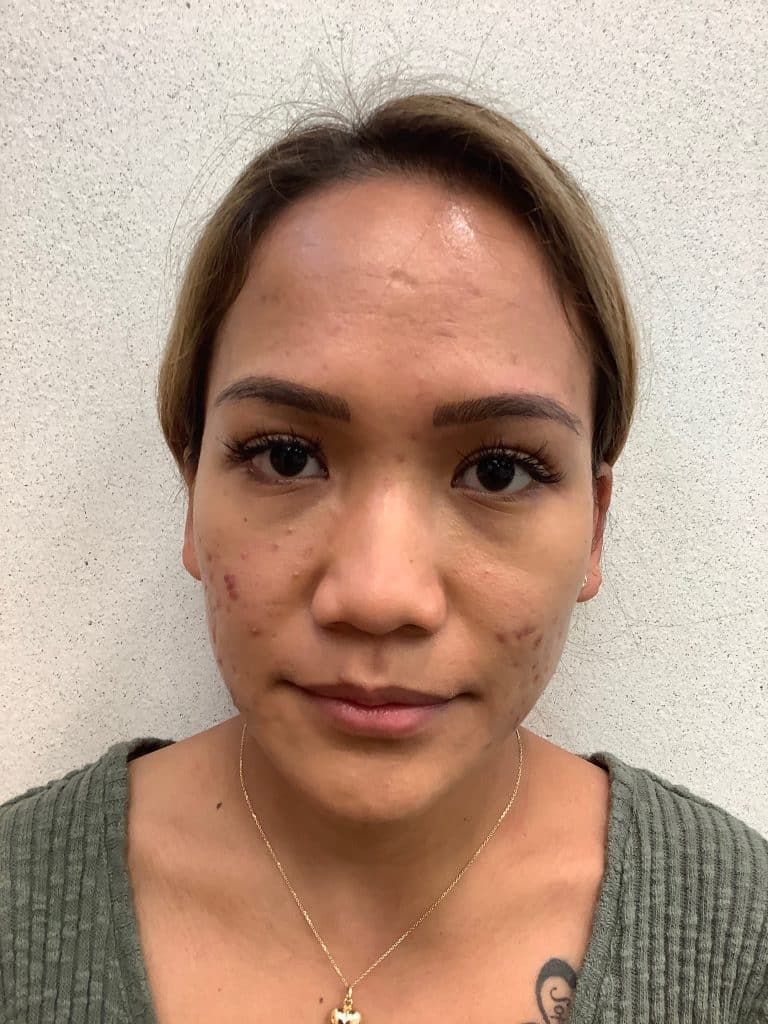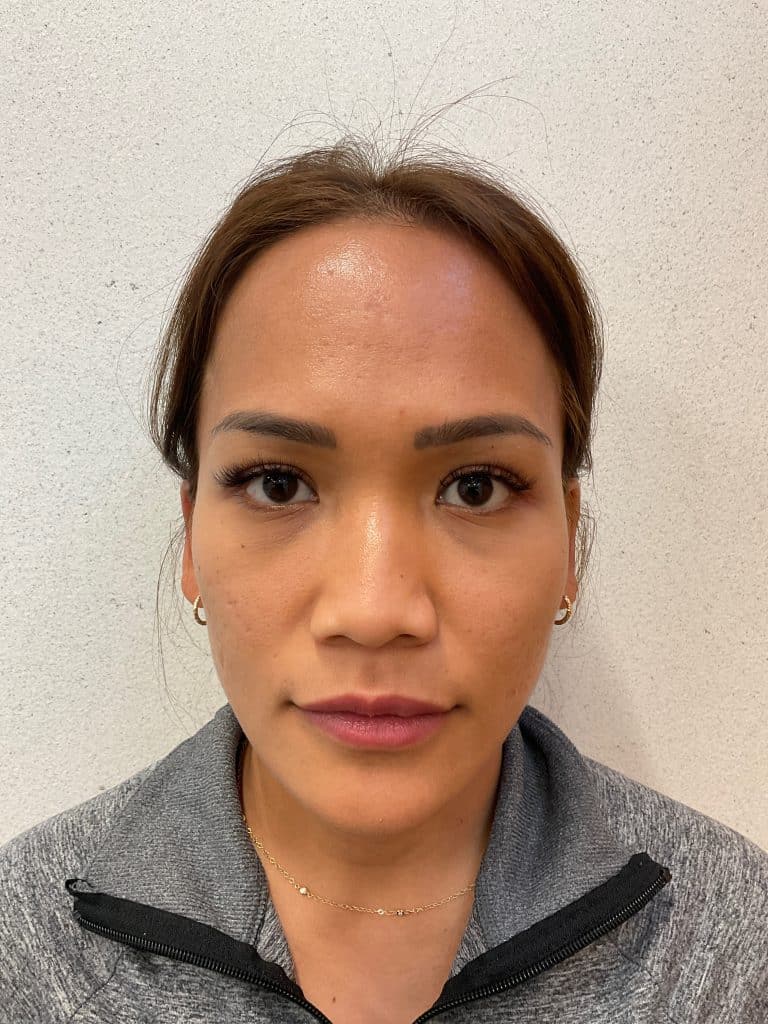Microneedling represents one of the most scientifically validated minimally invasive treatments for comprehensive skin rejuvenation. At Schlessinger MD in Omaha, Nebraska, board-certified dermatologists, cosmetic surgeons and Mohs surgeons, Drs. Joel and Daniel Schlessinger utilize this proven procedure to address multiple dermatological concerns through controlled collagen induction therapy. Here’s what you need to know:
- What is microneedling good for?
- EndyMed Intensif RF microneedling: Advanced technology for enhanced results
- Recovery timeline and results
- Essential microneedling aftercare
- Professional vs. at-home microneedling
- Combining microneedling with other treatments
- Your path to healthier skin
What is microneedling good for?
Microneedling, clinically known as percutaneous collagen induction therapy, utilizes fine medical-grade needles to create controlled microchannels in the dermal layer of the skin. This precise prick of the skin triggers the body’s wound healing cascade, stimulating fibroblast activity and collagen synthesis.
“The beauty of microneedling is that it is an accessible and cost-effective approach to rejuvenation. While it isn’t the most dramatic of our procedures, it addresses a variety of concerns in a simple manner with little downtime,” explains Dr. Joel Schlessinger. “By creating these controlled micro-injuries, we’re essentially telling the skin to rebuild fresh, healthy collagen.”
The procedure addresses acne scarring, rhytides (wrinkles), striae distensae (stretch marks), traumatic scars and textural irregularities. The micro-channels also enhance transdermal delivery of topical therapeutic agents, increasing their penetration up to twenty times. When combined with platelet-rich plasma (PRP) or specialized growth factor serums, microneedling become even more effective at accelerating cellular regeneration.


EndyMed Intensif RF microneedling: Advanced technology for enhanced results
EndyMed Intensif RF microneedling combines traditional microneedling with controlled radiofrequency energy delivery, adding yet one other modality to the treatment regimen. This advanced modality delivers energy through the microneedles directly into the dermis, creating thermal zones that enhance collagen remodeling and dermal tightening.
“EndyMed Intensif allows us to treat at multiple tissue depths simultaneously,” Dr. Joel Schlessinger explains. “The mechanical needling addresses the upper and mid-dermis, while the radiofrequency energy creates heating and collagen stimulation of deeper tissue layers.”
The EndyMed Intensif system is effective at treating moderate skin laxity, wrinkles and acne scarring. It offers precise depth control and consistent energy delivery for optimal, predictable results at Schlessinger MD.
How long does it take to see results from microneedling?
Collagen synthesis and dermal remodeling occur gradually:
Initial improvements: One to two weeks post-treatment as inflammation resolves
Noticeable changes: Four to six weeks as Type I and Type III collagen production accelerates. Visible improvement in skin texture becomes apparent as new collagen begins to mature. Fine lines diminish, pore size appears reduced and overall skin tone improves.
Most patients notice a glowing effect as cellular turnover increases. Patients notice a visible improvement in skin texture, with fine lines diminishing, pore size appearing reduced, and overall skin tone improving.
Full clinical results: Three to six months as collagen continues to mature
Continued improvement: Up to twelve months as dermal remodeling continues
Dr. Daniel Schlessinger notes, “Patients may want immediate results, but microneedling works differently than treatments like fillers that deliver instant gratification. We’re stimulating your own skin to produce new collagen, and that’s a biological process that takes time.”
Essential microneedling aftercare
First 24 hours:
- Avoid touching treated skin
- Do not apply makeup
- Cleanse gently with a mild, pH-balanced cleanser
- Apply only physician-recommended post-procedure serums such as Alastin Nectar
Days two through seven:
- Apply broad-spectrum SPF 30+ sunscreen (mineral-based preferred)
- Avoid active ingredients including retinoids, alpha hydroxy acids and vitamin C along with the Alastin Nectar
- Maintain adequate hydration
- Avoid perspiration-inducing activities and direct sun exposure
Long-term maintenance:
- Continue diligent sun protection
- Resume regular skin care routine after one week
- Follow recommended maintenance treatment schedule
“The aftercare period is not the time to experiment with aggressive skin care products,” Dr. Joel Schlessinger emphasizes. “Your skin’s barrier function is temporarily compromised, and it needs gentle, supportive care to heal optimally.”
Professional vs. at-home microneedling
While consumer-grade dermarollers are readily available, professional treatments offer substantially superior outcomes and much less likelihood of infections. At Schlessinger MD, we use sterile, medical-grade equipment with precise depth control under controlled, aseptic conditions that minimize infection risk.
“Having seen numerous cases of raging bacterial infection following at-home microneedling, I cannot recommend strongly enough that patients avoid at-home microneedling devices,” states Dr. Joel Schlessinger. “There is also the risk of causing scarring from improper technique, post-inflammatory hyperpigmentation or, at best, simply ineffective results. You should see a board-certified dermatologist if you are considering microneedling.”
Combining microneedling with other treatments
Microneedling can be strategically integrated with aesthetic procedures, including laser treatments, neurotoxins, fillers, biostimulators, platelet rich plasma (PRP), and prescription topical treatments.
Dr. Daniel Schlessinger frequently recommends combination approaches. “Many patients benefit from a multi-modal approach that addresses various aspects of skin aging simultaneously. For example, combining microneedling with BBL (BroadBand Light) therapy allows us to address both textural concerns and pigmentation irregularities in a coordinated treatment plan.”
Your path to healthier skin
Microneedling offers a scientifically validated approach to skin rejuvenation, characterized by minimal downtime and an excellent safety profile when performed by qualified medical professionals. At Schlessinger MD, our approach combines clinical expertise, state-of-the-art technology and individualized treatment planning to optimize outcomes.
“We’ve treated thousands of patients with microneedling over the years, and it remains one of our go-to procedures because it works with the body’s natural healing processes,” reflects Dr. Joel Schlessinger. “When performed correctly by experienced practitioners, microneedling offers significant improvements with minimal risk, and the results continue to improve for months after treatment.”
Ready to discover what professional microneedling can do for your skin? Contact Schlessinger MD to schedule your complimentary consultation with Drs. Joel or Daniel Schlessinger.



